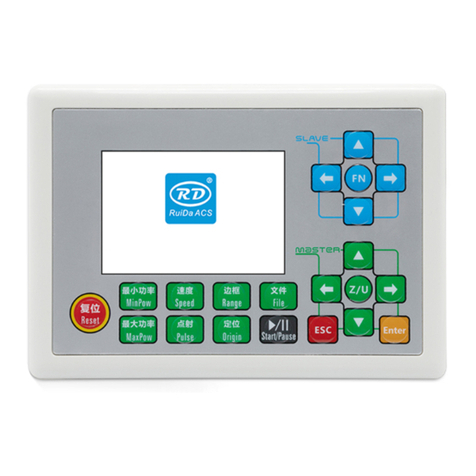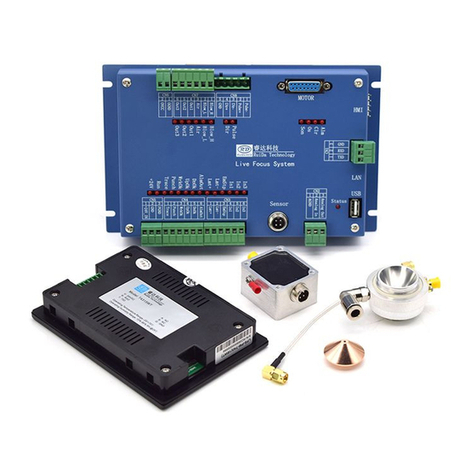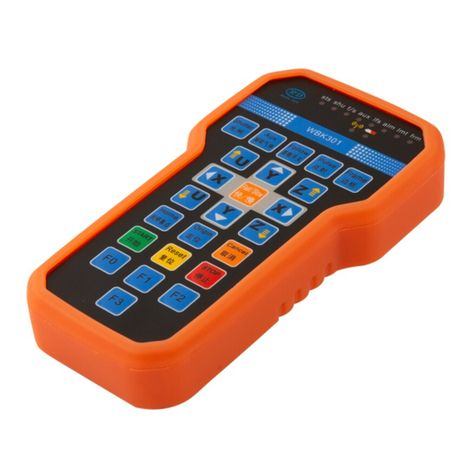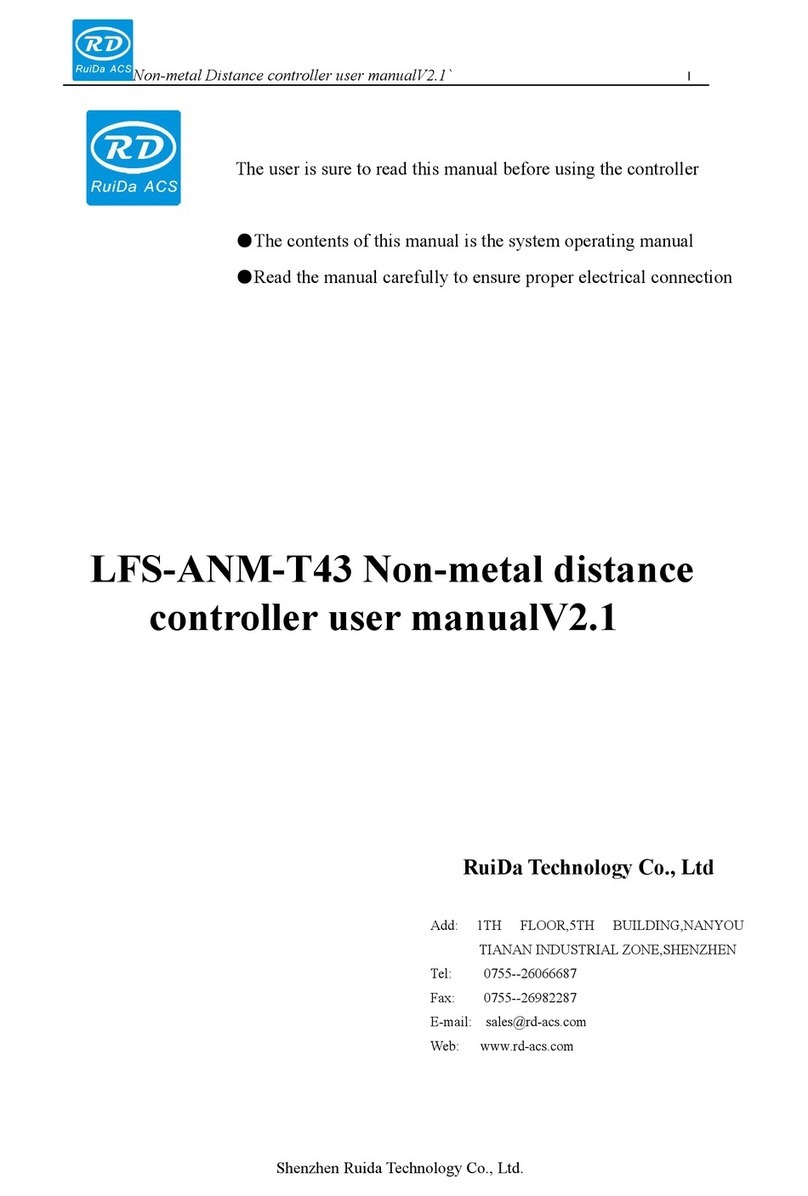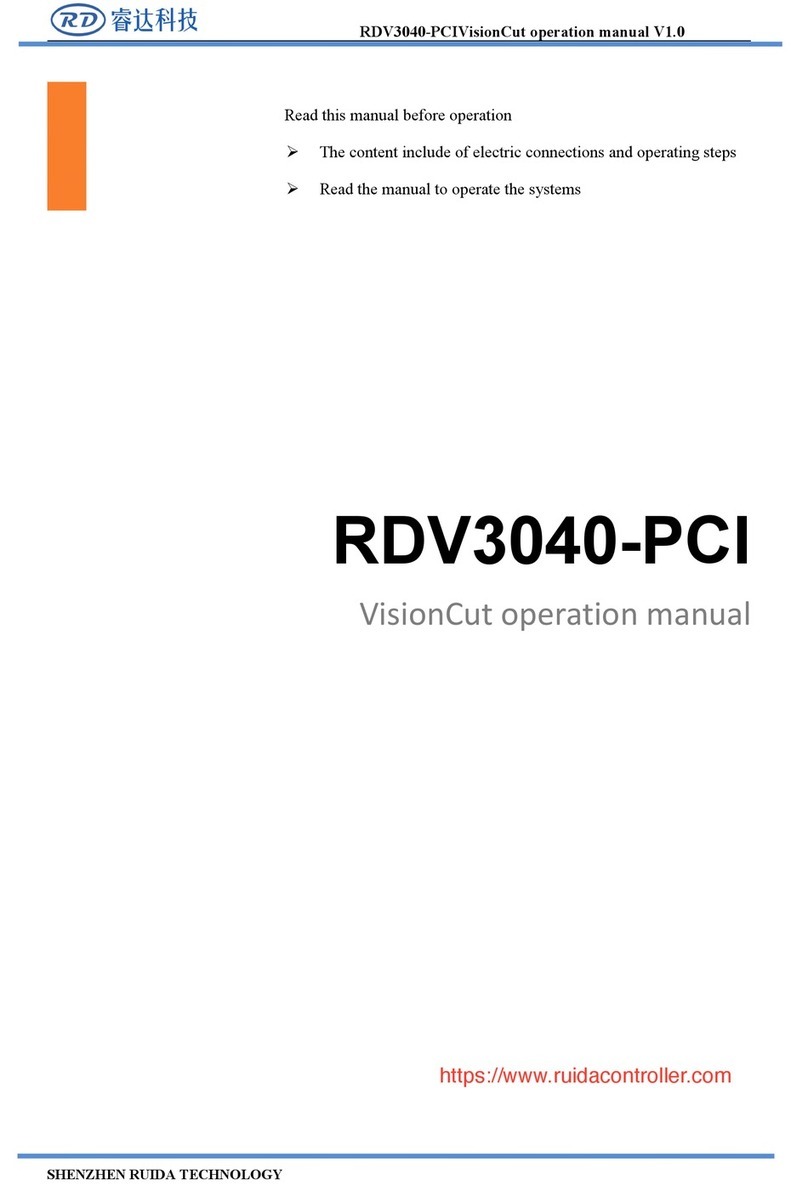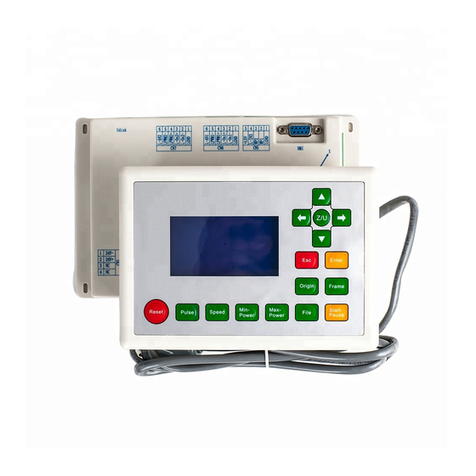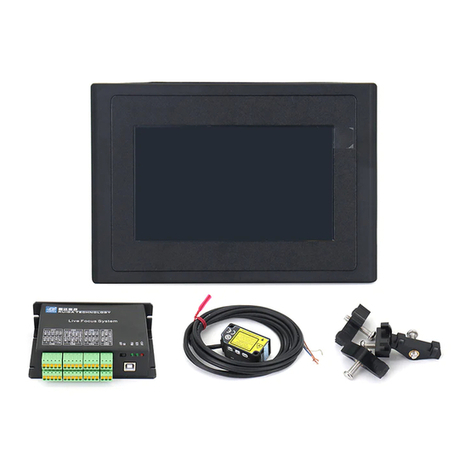RDC6332G Control System User Manual
3 / 47
© 2015 Ruida Technology. All Rights Reserved
6.2 Valid Rising Edge for Pulse Signal.....................................................................22
6.3 Valid Falling Edge for Pulse Signal....................................................................23
Chapter 7 Examples of IO-port Wiring................................................25
7.1 Input Port............................................................................................................ 25
7.2 Output Port..........................................................................................................26
Chapter 8 Operating Instruction of Panel............................................27
8.1 The Keys Introduction........................................................................................ 27
8.1.1 Introduction to the whole panel....................................................................27
8.1.2 Introduction to the keys................................................................................27
8.2 Introduction to the interface functions................................................................29
8.2.1 The screen of power on................................................................................ 29
8.2.2 The main interface........................................................................................30
8.2.3 Speed settings...............................................................................................30
8.2.4 Max/Min power settings.............................................................................. 31
8.2.5 Reset the axis................................................................................................32
8.2.6 Set the layer parameters............................................................................... 32
8.3 Introduction to menus......................................................................................... 33
8.3.1 System information...................................................................................... 34
8.3.2 System config...............................................................................................34
8.3.3 Function sub menu....................................................................................... 35
8.3.4 User para...................................................................................................... 37
8.3.5 Machine para................................................................................................37
8.4 Introduction to file function................................................................................38
8.4.1 Memory file..................................................................................................38
8.4.2 Udisk file......................................................................................................39
8.5 Introduction to diagnoses function..................................................................... 40
8.6 Introduction to alarm info............................................................................... 40
Chapter 9 Manufacturer/User Parameters Explanation.................... 41
9.1 Manufacturer Parameters....................................................................................41
9.2 User Parameters.................................................................................................. 44
